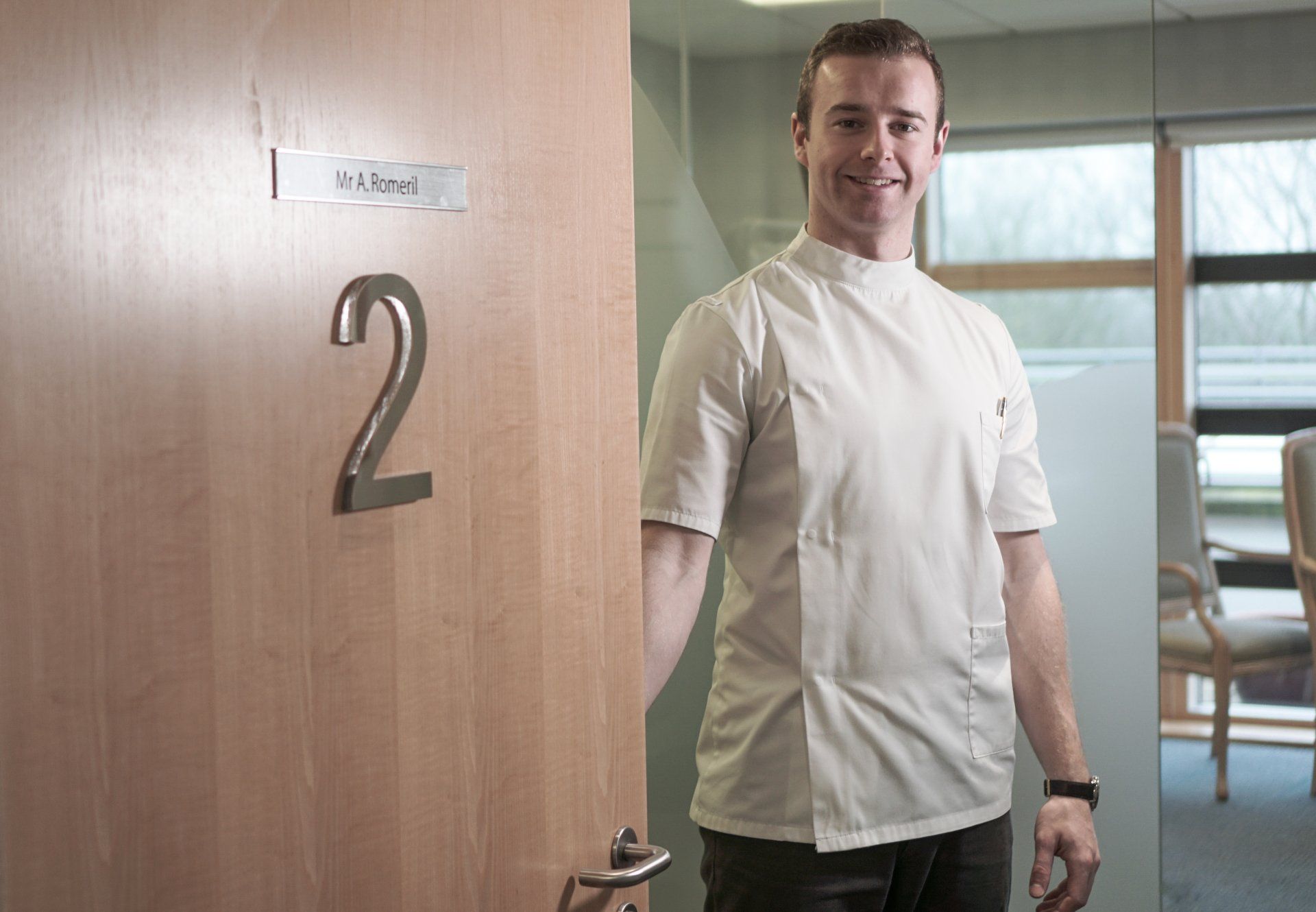Neck Pain
Feel free to scroll down or use the buttons to be directed to that section
01 Causes
Neck pain is a common complaint seen in osteopathic clinics. There are many factors that influence neck pain, these factors can be split into activity factors and resting factors.
Activity factors include: rotating the head to look behind you during reversing, cycling, motorbike riding, or turning the head during swimming, surfing, archery, football, rugby, basketball, dance and many other sports.
Resting factors include: seated and standing postures, working posture/desk set up, use of laptops/tablets on sofas or in bed and TV and gaming set ups.
The main cause for neck pain tends to be a result of muscle tightness, muscle fatigue or if joint stiffness starts to build up. Many people will find that moving around more during the day eases off the aches that gradually build up. Alternatively the pain may be sharp and so avoiding certain movements will reduce the frequency of pain experience.
02 Symptoms
In a number of people neck pain will accompany a shooting pain down either/both arms, pins and needles or even numbness in parts of the arms or hands. This usually indicates there is nerve compression from the neck or the muscles of the neck and shoulder. Symptoms such as this should really be properly assessed to identify the root of the problem. This will indicate whether the problem can be treated with osteopathy or if further referral to a specialist may be more worthwhile.
A lot of people will hold their tension in their necks; for example, shoulders will be shrugged up slightly or held tight whilst at work or driving. This results in muscle ‘knots’ and causes fatigue to settle into the muscles. This often also slowly builds up over time.
Neck pain could also be caused by jaw pain and upper-mid back pain.
Symptoms of Neck Pain
Sharp/pinching sensation in the neck
Too much pain to move the head
Pain looking over the shoulder/behind you
Pain looking toward the floor/ceiling
Pins and needles/numbness in the arm or hand
Stiff neck in the morning
Headaches
03 Treatment
As osteopaths we are trained to examine not only the site of pain but also all the joints and muscles that may be causing the neck pain. This means we not only assess the neck muscles and vertebrae, but we also assess the muscles and joints of the jaw, rib cage, chest as well as the upper and low back.
It is agreed that the ideal shape of the spine is a thin ‘S’ shape where a small arch in the lower back is balanced by a small rounding of the upper back. If either of these curves are larger than normal this will heavily influence the position of the neck. More times than not: pushing the head forwards. This forward head posture forces the muscles of the neck to fight against the weight of the head and so results in muscle strains of the neck and upper back. This is why we will assess multiple areas because in this scenario: treating the neck will not resolve the root cause of the problem.
Treatment involves release of tension in the front, back and sides of the neck, shoulders, chest and rib cage (and of course the jaw and lower areas if deemed significant). This may involve deep massage techniques, soft tissue work, techniques to improve the movement and function of the spine and ribs such as harmonic mobilisation, osteopathic mobilisation and also spinal manipulation.
04 Management
Depending on the cause, specific nutritional interventions may aid the reduction in inflammation and irritation of the muscles and joints. In this situation, improving blood circulation will help improve the healing of muscle strains and to further relax off muscle spasms.
- Postural advice/adjustments for the above mentioned activity and resting may ease the neck pain and help prevent its return long term.
- Exercises to specifically target muscle weakness or imbalances in the neck, back or chest may be required to resolve the predisposing factors to the pain.
- Stress relieving activities ranging from specific exercise classes, breathing techniques and visualisation techniques to manage the build up of tension.
- Hydrotherapy advice to alter the blood flow to the sites in need of attention to help the body move closer to a pain free state.
